In its natural state, water contains several minerals that are important for humans. However, if you own a reverse osmosis system, it filters good minerals out along with the bad ones.
Although food is a better source of minerals than water, understanding how to remineralize reverse osmosis water still offers many health benefits.
This article will teach you how to remineralize reverse osmosis water.
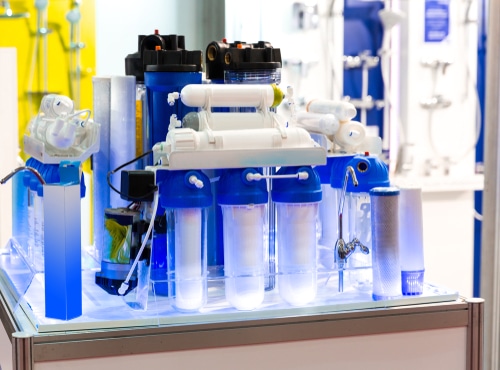
Guide: How to Remineralize Reverse Osmosis Water
There are several ways you can remineralize your drinking water, including:
- Adding trace mineral drops
- Using remineralizing filters
- Purchasing an alkaline water pitcher
- Drinking from an alkaline water bottle
- Applying pink Himalayan salt
That said, when you’re looking at how to remineralize RO water and whether it’s the right fit for you, keep in mind that you can extract more minerals from food than water.
Nevertheless, the World Health Organization released a study showing that people may be subject to health risks by drinking the demineralized water that reverse osmosis systems produce. Therefore, they recommend remineralizing RO water.
Naturally Occurring Minerals in Drinking Water
Reverse osmosis remineralization is the process of injecting purified water with the minerals that your RO system removes.
Some of the essential minerals that water naturally contains before it undergoes reverse osmosis include:
- Calcium: Supports bone strength, muscle contractions, hormone regulation, and the nervous system.
- Magnesium: Controls biochemical reactions and bone health.
- Sodium: Responsible for muscle contractions and nerve impulse regulations.
- Potassium: Helps regulate your heartbeat.
- Phosphorous: Aids with protein formation and helps control how your body processes fat and carbohydrates.
Reverse Osmosis Remineralization Techniques
If you’re ready to replenish your reverse osmosis water with healthy minerals, there are five main options you have to choose from.
Let’s look at each:
1. Add Trace Mineral Drops To Remineralize RO Water
If you’re looking for a cheap and easy way to remineralize your water, trace mineral drops are an excellent choice.
You’ll use these drops by either applying them directly to your glass of water or a large container. The quantity of drops you’ll need to apply varies according to the brand, as does the quality of the drops themselves.
You can expect a glass of mineral drops to last you for a few weeks or even months at a time, depending on the size and how often you use them.
2. Get Remineralizing Filters
Let’s face it—putting mineral drops in your water every time you want a drink is a hassle. So, remineralizing filters are a great choice for people who want a set it and forget it arrangement.
However, before you run out and purchase a remineralizing filter, which can range from $30 to $80 or more, check to see if your reverse osmosis system already comes with this filter. If it doesn’t, then you’ll need to buy a remineralizing filter and install it on your main water line immediately after your RO system.
When choosing a remineralization filter, it’s critical to know what minerals you want to put back in your water. For example, some filters will only inject calcium back into your water. Others include calcium and magnesium, while the best filters boost your water with several minerals.
3. Use Alkaline Water Pitchers
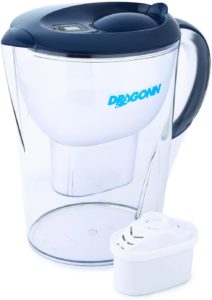
An alkaline water pitcher is a great option for people seeking to remineralize their water on occasion. The pitcher, which looks like a standard water filter pitcher, has a filter cartridge that supplies the water you put into it with a regulated amount of minerals.
You’ll need some patience and preplanning when using an alkaline water pitcher—the water takes several minutes to filter through.
The alkaline pitcher itself is economical, starting at around $20. As with any filter product, you’ll need to replace the old filters with new ones. The good news is that the replacement filters cost far less than remineralizing filters, and you only need to change them every one to three months.
4. Alkaline Water Bottles
Buying an alkaline water bottle is an excellent option to remineralize reverse osmosis water on the go.
These water bottles work similar to alkaline water pitchers, except they’re in a smaller, more mobile form. They’re a great choice if you frequently visit areas where you’re unsure about the water’s mineral content; simply fill the alkaline bottle with water and wait for the filter to increase the pH level, adding minerals in the process.
The filters on alkaline water bottles need replacing about every six weeks, although it’ll depend on the brand you choose and how often you use it.
5. Add Pink Himalayan Salt To Remineralize Reverse Osmosis Water

It may seem too easy to be true, but adding pink Himalayan salt to your water is an excellent way to regain water’s calcium, magnesium, and potassium properties.
While you can sprinkle a little salt into your water and drink it straight, the salt grains can make for an unpleasant experience. So, we recommend using a 1:4 salt to water ratio (Himalayan salt has far less sodium than table salt).
Let the water and Himalayan salt sit for 24 hours. That’ll produce what people call sole water. Not only does sole water give your body a boost of essential minerals, but people also say that it’s vital for health because it helps balance the positive and negative ions in your body.

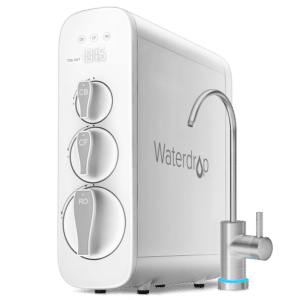
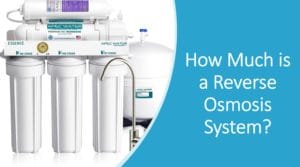
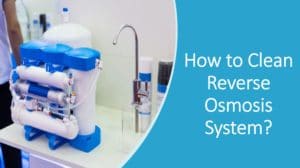
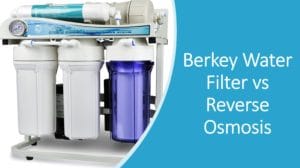

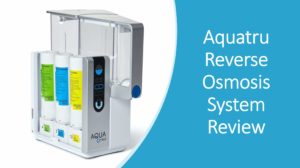

Hello, sorry, what is meant by 1:4 salt to water ratio? Can you give specifics? Thanks
Hi Dylan, thanks for the question. It’s just as you might think, it’s one part Himalayan salt to 4 parts water, roughly. I say roughly because the main thing you want to accomplish with creating this “sole water” is that the water can no longer hold any more dissolved salt. That’s when you stop adding salt and add a little more water to make sure all of the salt is dissolved. This happens roughly around the 1:4 ratio. Then, you don’t actually drink this sole water, but it becomes an ingredient for you to use later (around a teaspoon at a time) for various recipes or to just add to a large glass of water to get the healthful minerals you want. I hope this helps explain better!
WHO has redacted their statements regarding adverse health effects of reverse osmosis water. You will find the link you have provided to their ‘study’ doesn’t work.
Hi Steven, thank you for reading and your feedback. I’ve gone ahead and provided a new link where interested readers can see this research from the WHO. It’s an almost 200 page report with a lot of interesting information that also draws from decades of research in these topics. So, interested readers should definitely take a look as they make decisions for themselves and their families on how they’d like to treat their water.